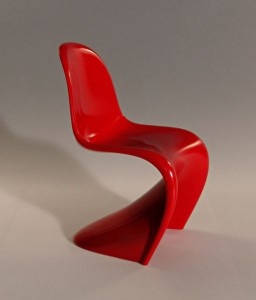Last week, Starwood Hotels announced the appointment of Ted Jacobs — formerly of the renowned architecture, design, and planning firm Gensler — to the position of Vice President of Brand Design for the lodging company’s luxury and “design-driven” brands, including W Hotels, Le Meridien, St. Regis, and The Luxury Collection. In our second installment of the Oyster Interviews series, we chat with him about his design philosophy, his hotel habits, and how to achieve some of our favorite hotel looks in our own homes.
Oyster: What inspired you to make the move from Gensler to Starwood?
Ted Jacobs: I have always been enamored with lifestyle brands, or those companies who see the power of choreographing and leveraging a multitude of meaningful customer touch-points. This system of holistically conceived ‘touch-points’ typically include all aspects of design, architecture, interior, product, and graphic design, as well as branded service and operations, and even logical partnerships with commensurate brands. Starwood does all of this, and I felt an exciting opportunity to be a part of its future evolution.
Oyster: What are some of your favorite pieces or design elements that you’ve seen in hotels lately?
Ted Jacobs: Anything that adds value or improves functionality – not big moves, but the really subtle things like an intuitively-placed light switch or place to put your toothbrush so it doesn’t fall in the toilet. Seriously. It’s happened.
Oyster: Any emerging hotel design trends – or trends we might see in the future?
Ted Jacobs: There has been and continues to be a trend to leverage conceptual and design philosophies from other industries. In hospitality, we often utilize the power of retail strategies to define customer journeys through space and let that inform the architecture and interior programs and functions for instance. Conversely, retail brands now adopt hospitality-type service programs to add value for their customers.
Oyster: Who are your favorite designers?
Ted Jacobs: [Graphic designer] Lester Beall, [architect] Oscar Niemeyer, [interior designer] Verner Panton, and Oskar Metsavaht.
Oyster: How do you choose the furnishings in a hotel room? What about the art?
Ted Jacobs: Everything we choose to be part of the Starwood experience is defined and governed by a concept narrative. This is developed as part of the design brief and informs the language of everything from the exterior and interior architecture, furniture and art programs. One big idea.
Oyster: Fill in the blank: A hotel should refresh its look every ____ years because ____.
Ted Jacobs: Having been in the business of creating experience-based customer environments, the answer is defined by the users. Humans are inherently fickle. No matter how cool, how new, how relevant, we get bored more and more quickly. We know this, we know our customers, and strategically plan for evolution accordingly.
Oyster: Any major hotel pet peeves?
Ted Jacobs: As much as I covet great design, service is a make or break for me. If that’s not there, I won’t return.
Oyster: What’s the design aesthetic like in your own house?
Ted Jacobs: You should ask the movers who recently came and asked why we had all plastic beach furniture in our house. That’s a Sergio Mazza chair!
Oyster: When we think of modern, cutting-edge design and Starwood, we think of W Hotels. Any recommendations for ways to incorporate that trademark W look into our own living spaces (at a reasonable price, of course)?
Ted Jacobs: Well, there’s certainly no formula, and I guess that’s the point. I’d say if one wanted to adopt the W philosophy when creating their own space, first and foremost think about what’s unique and ownable to you. Tell a story. Have a point of view. Embrace the idea of making the familiar new, and the new familiar. Integrate moments of surprise, eclectic elements and unexpected spaces that delight. After all, you’re creating an environment that will grow and evolve.
All products are independently selected by our writers and editors. If you buy something through our links, Oyster may earn an affiliate commission.





